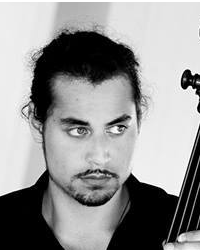Josh
About
- Username
- Josh
- Joined
- Visits
- 255
- Last Active
- Roles
- Member, Moderator
Comments
-
Hi Zennie, Great that you've solved it. Just to avoid problems in the future: if you create a variable like this exp.variable = 'leftnum', you'll end up with a variable that literally contains a string 'leftnum'. I gave the example exp.variable = '…
-
Hi Zennie, You're almost there! In order to use a variable outside of the inline_script, you have to make it 'available' elsewhere in your experiment, by means of exp.variable = 'your_number', or exp.set('number', str(leftnum)+str(rightnum)). In yo…
-
Hi Amihai, Of course. Usually, your sequences would only have to contain one block or one trial, and you would run these sequences three times by means of a loop item. In the loop item you could then define three conditions (leading to three trial-…
-
Hi Anupama, Could you try changing the lines with the pop commands into list_variable.pop(random.choice(range(480))) ? I think that should work. Cheers, Josh
-
Hi Shruti, Here's the deal: the touch_response item will return a variable response that is set either to 1 or to 2, in accordance with the areas of the touch screen. So you should indicate for each trial whether the correct response is 1 or 2; 'le…
-
Hi, * Woops, you're totally right. Knowing that the dot will have made a cycle every second, your variable that keeps track of the cycles could be current_pass = int((exp.time()-start_time()) / 1000). * It may be best to create a list variable th…
-
Hi Shruti, Have you also defined what the correct response should be every trial? You can leave the Correct response statement in the touch_response item empty; rather, you could create a correct_response variable in the loop item where you indicat…
-
Hi Ellen, Just to be sure; your experiment works fine when you leave the instruction form out? And what happens when you run a form_text_display item in a new experiment? (so just a dummy project with the form item alone). And what platform are you…
-
Hi, Your hunch may have some merit. Did you try adding the extension to the filename? (e.g. 'item1.jpg') Cheers, Josh
-
Hi Anupama, Regarding your first question, from a quick glance at your code it seems that you're already guaranteed that each pass lasts exactly a second, because the x-coordinate of the dot is based on a sinus function that uses the current time. …
-
Hi Shruti, Your problem may be in the logic of the code that defines when your sketchpads need to be shown. Even without python scripting, you'll have to define some 'if this-then that' rules somewhere, because you only want some things to be shown…
-
Hi Eugenia, Drag-and-drop isn't something that's built in in OpenSesame, but within OpenSesame you may be able to use a pygame module (see e.g. http://stackoverflow.com/questions/30751547/python-pygame-how-to-create-a-drag-and-drop-with-multiple-im…
-
Hi, It sounds as if something at the start of your block requires processing power, causing the delay. At this point I can't tell if this is unavoidable for you, or if certain parts of your experiment could've been programmed more efficiently. What…
-
Hi, Are you using the sampler item to play your sounds, or an inline_script? Cheers, Josh
-
Hi, Indeed, the response time indicates the time from the moment your keyboard item started. If you want participants to be able to respond during the stimulus presentation time, however, this is problematic, (participants can only respond after th…
-
Alright Chiara. About determining response events: yes, using the eye-link datafile would be the way to go, if the response is based on a fixation or saccade. Otherwise it's better to stick to the Opensesame logfile for your analyses. But in the cas…
-
Hi Chiara, I don't understand your question completely. What do you plan to gain from subtracting the one time from the other? You want to check if there's a discrepancy between the moment the trigger was logged in the edf file and the moment of th…
-
Hi Joshua, Based on this information I'm not sure what causes your problem. Are you sure the wait variable is assigned a value under all circumstances? Does the line of code where you create wait appear after the part that collects a keyboard respo…
-
Hi Alex, So the idea is that participants can always respond yes or no, with either one of 4 buttons? And then you just want to be able to specify which button was pressed? Depending on whether you used the mouse item or an inline_script, the butt…
-
Hi Ola, is the "practice = yes" part of your if-statement? If so, then you may want to change yes into "yes". Cheers Josh
-
Hi, So the question is how to present text? In the same way as how you presented instructions. Which tutorial did you do? Cheers, Josh
-
Hi Mario, The joystick plug-in (http://osdoc.cogsci.nl/devices/joystick/) has the function .get_joyaxes() which returns a position value. I suspect this to be an x,y-tuple, although it could also be the direct angle of the joystick. You could in an…
-
Hi Michel, With overwriting, do you mean that you keep on adding shapes to the same canvas without clearing previous shapes between trials? If so, then I think that may be the problem. Is it possible to add a simple canvas.clear() at the end of you…
-
Hi Francisco, The first thing I'm thinking is: the picture file is missing its extension (e.g. '.jpg', '.png'). Are you sure that it works without extension for other pictures? Cheers, Josh
-
Hi Harold, I think you were right. Did it solve the problem? Cheers, Josh
-
Hi Michel, If your canvas has the same name in every trial, it's just a single object and should therefore not increase the memory load. The cause of your memory problem depends on the design of your experiment. What kind of data do you log, and ho…
-
Hi Timo, I suspect that the old SR box plug-in should do the trick for the Chronos system as well. Is there a way for you guys to try out the system before purchasing it? Cheers, Josh
-
Hi, This indeed sounds like something windows 10-related. I haven't switched to windows 10 myself yet, so I'm not sure about this, but did you check if windows 10 came with quirky settings? Microsoft tends to put some horrible features in their lat…
-
Hi, Maybe you want to have a look here: http://osdoc.cogsci.nl/devices/triggers/ You simply run OpenSesame on your windows 7 computer, while you gather the EEG data on your windows 98 computer. The only thing you have to do, is to send a trigger f…
-
Hi Ola, Did you use an inline script to control your sound? (if not, see http://osdoc.cogsci.nl/python/sampler/) If you have created a sound item just like you would create a canvas, the sound should be stopped simply by your_sound.stop(). You pre…



